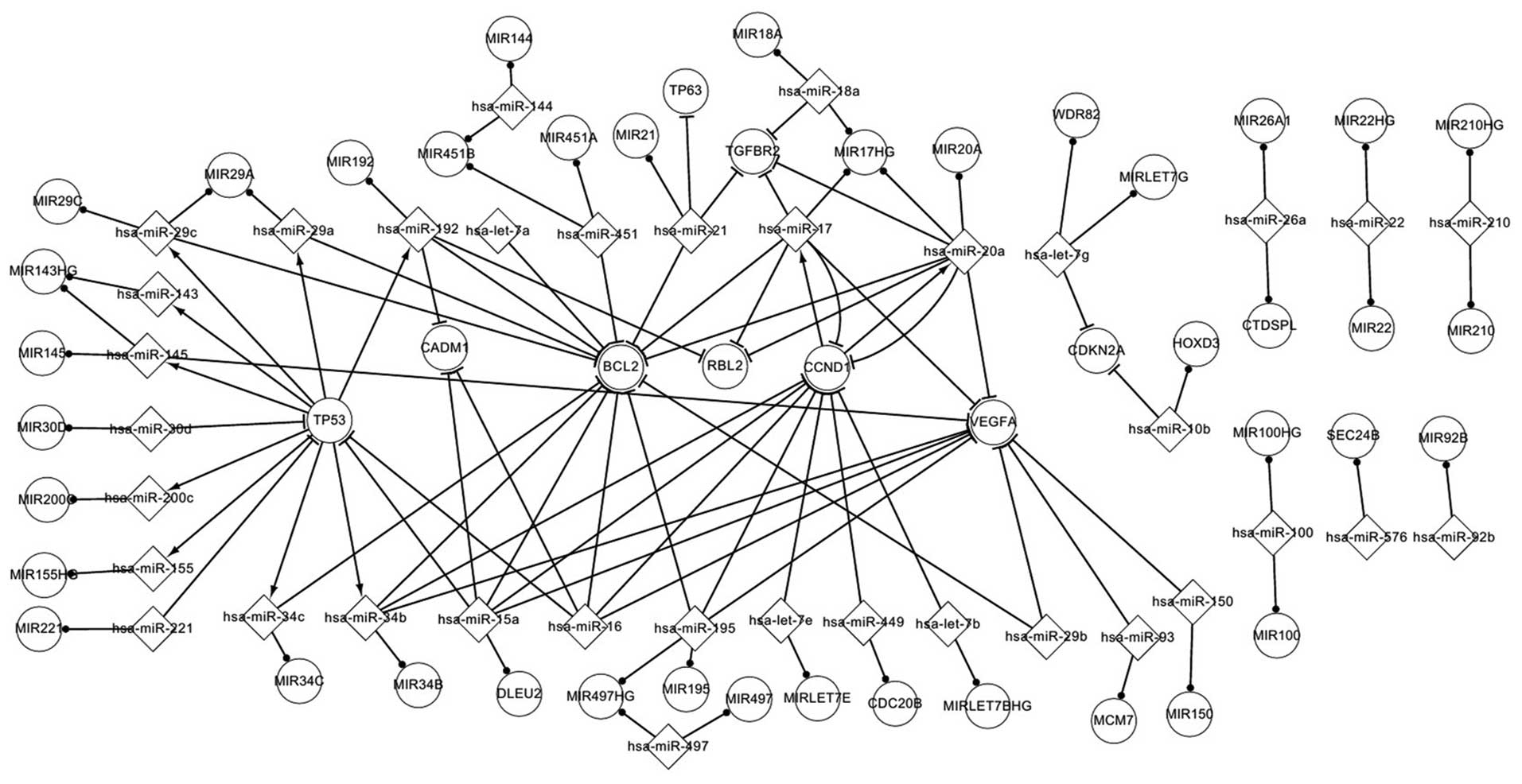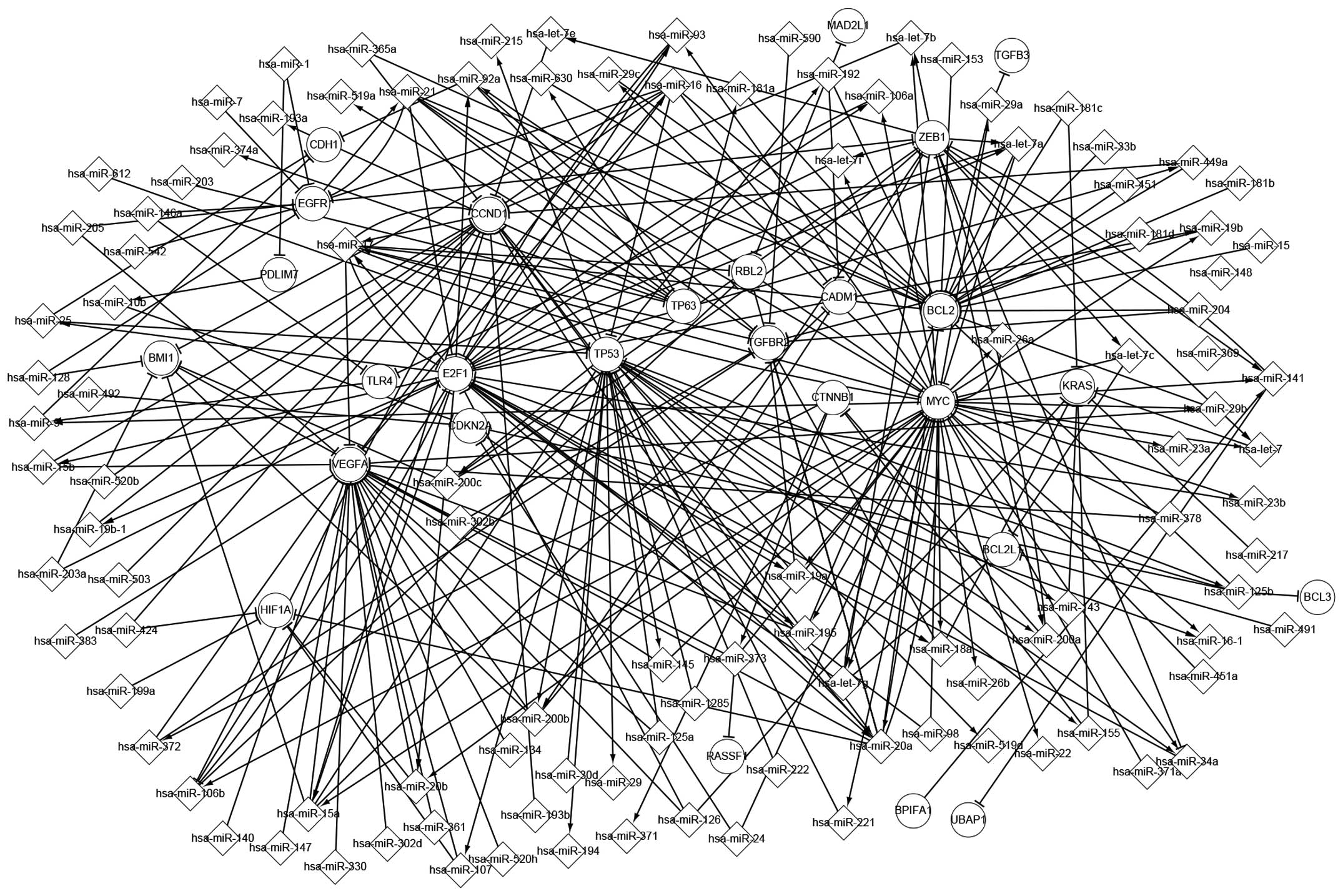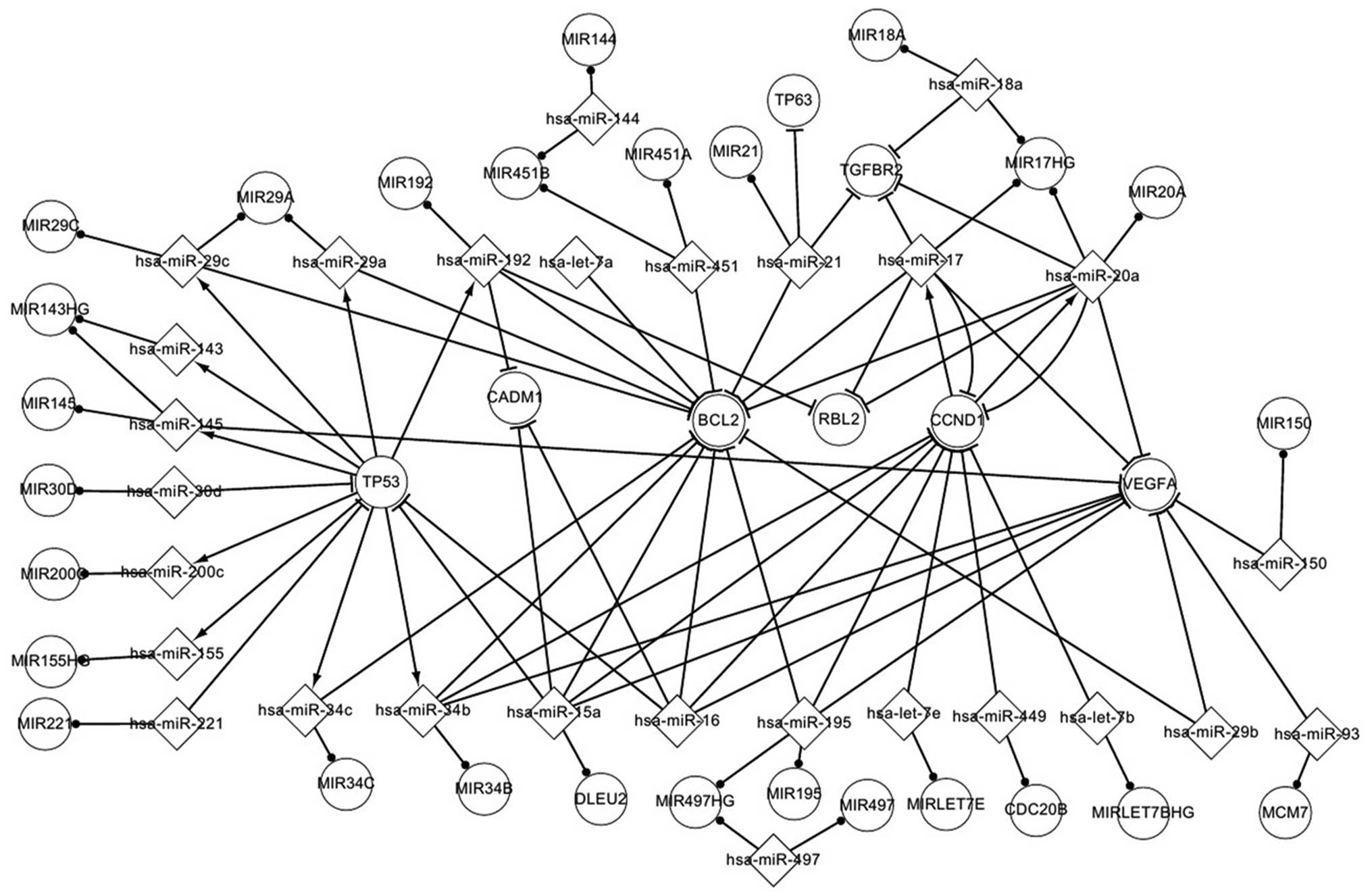Network analysis of microRNAs, transcription factors, target genes and host genes in nasopharyngeal carcinoma
- Authors:
- Published online on: April 20, 2016 https://doi.org/10.3892/ol.2016.4476
- Pages: 3821-3828
Metrics:
Total
Views: 0 (Spandidos Publications: | PMC Statistics:
)
Total PDF Downloads: 0 (Spandidos Publications: | PMC Statistics:
)
Abstract
Numerous studies on the morbidity of nasopharyngeal carcinoma (NPC) have identified several genes, microRNAs (miRNAs or miRs) and transcription factors (TFs) that influence the pathogenesis of NPC. However, summarizing all the regulatory networks involved in NPC is challenging. In the present study, the genes, miRNAs and TFs involved in NPC were considered as the nodes of the so‑called regulatory network, and the associations between them were investigated. To clearly represent these associations, three regulatory networks were built seperately, namely, the differentially expressed network, the associated network and the global network. The differentially expressed network is the most important one of these three networks, since its nodes are differentially expressed genes whose mutations may lead to the development of NPC. Therefore, by modifying the aberrant expression of those genes that are differentially expressed in this network, their dysregulation may be corrected and the tumorigenesis of NPC may thus be prevented. Analysis of the aforementioned three networks highlighted the importance of certain pathways, such as self‑adaptation pathways, in the development of NPC. For example, cyclin D1 (CCND1) was observed to regulate Homo sapiens‑miR‑20a, which in turn targeted CCND1. The present study conducted a systematic analysis of the pathogenesis of NPC through the three aforementioned regulatory networks, and provided a theoretical model for biologists. Future studies are required to evaluate the influence of the highlighted pathways in NPC.














